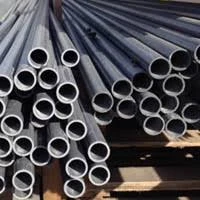
-
 Afrikaans
Afrikaans -
 Albanian
Albanian -
 Amharic
Amharic -
 Arabic
Arabic -
 Armenian
Armenian -
 Azerbaijani
Azerbaijani -
 Basque
Basque -
 Belarusian
Belarusian -
 Bengali
Bengali -
 Bosnian
Bosnian -
 Bulgarian
Bulgarian -
 Catalan
Catalan -
 Cebuano
Cebuano -
 China
China -
 China (Taiwan)
China (Taiwan) -
 Corsican
Corsican -
 Croatian
Croatian -
 Czech
Czech -
 Danish
Danish -
 Dutch
Dutch -
 English
English -
 Esperanto
Esperanto -
 Estonian
Estonian -
 Finnish
Finnish -
 French
French -
 Frisian
Frisian -
 Galician
Galician -
 Georgian
Georgian -
 German
German -
 Greek
Greek -
 Gujarati
Gujarati -
 Haitian Creole
Haitian Creole -
 hausa
hausa -
 hawaiian
hawaiian -
 Hebrew
Hebrew -
 Hindi
Hindi -
 Miao
Miao -
 Hungarian
Hungarian -
 Icelandic
Icelandic -
 igbo
igbo -
 Indonesian
Indonesian -
 irish
irish -
 Italian
Italian -
 Japanese
Japanese -
 Javanese
Javanese -
 Kannada
Kannada -
 kazakh
kazakh -
 Khmer
Khmer -
 Rwandese
Rwandese -
 Korean
Korean -
 Kurdish
Kurdish -
 Kyrgyz
Kyrgyz -
 Lao
Lao -
 Latin
Latin -
 Latvian
Latvian -
 Lithuanian
Lithuanian -
 Luxembourgish
Luxembourgish -
 Macedonian
Macedonian -
 Malgashi
Malgashi -
 Malay
Malay -
 Malayalam
Malayalam -
 Maltese
Maltese -
 Maori
Maori -
 Marathi
Marathi -
 Mongolian
Mongolian -
 Myanmar
Myanmar -
 Nepali
Nepali -
 Norwegian
Norwegian -
 Norwegian
Norwegian -
 Occitan
Occitan -
 Pashto
Pashto -
 Persian
Persian -
 Polish
Polish -
 Portuguese
Portuguese -
 Punjabi
Punjabi -
 Romanian
Romanian -
 Russian
Russian -
 Samoan
Samoan -
 Scottish Gaelic
Scottish Gaelic -
 Serbian
Serbian -
 Sesotho
Sesotho -
 Shona
Shona -
 Sindhi
Sindhi -
 Sinhala
Sinhala -
 Slovak
Slovak -
 Slovenian
Slovenian -
 Somali
Somali -
 Spanish
Spanish -
 Sundanese
Sundanese -
 Swahili
Swahili -
 Swedish
Swedish -
 Tagalog
Tagalog -
 Tajik
Tajik -
 Tamil
Tamil -
 Tatar
Tatar -
 Telugu
Telugu -
 Thai
Thai -
 Turkish
Turkish -
 Turkmen
Turkmen -
 Ukrainian
Ukrainian -
 Urdu
Urdu -
 Uighur
Uighur -
 Uzbek
Uzbek -
 Vietnamese
Vietnamese -
 Welsh
Welsh -
 Bantu
Bantu -
 Yiddish
Yiddish -
 Yoruba
Yoruba -
 Zulu
Zulu
drilling through limestone is challenging.
Challenges of Drilling Through Limestone
Drilling through limestone presents a unique set of challenges that can complicate construction and geological exploration projects. Limestone, primarily composed of calcium carbonate, is one of the most common sedimentary rocks found on the Earth's surface. Its properties can vary significantly based on factors such as the presence of impurities, the porosity of the rock, and its structural integrity. As a result, understanding the challenges associated with drilling through limestone is essential for engineers, geologists, and construction professionals.
One of the primary challenges of drilling through limestone is its hardness and density. Although limestone is generally softer than other types of rock, certain formations can be quite tough, making the drilling process more demanding. Drilling equipment must be appropriately selected and calibrated to handle the varying consistency of limestone. High-performance drill bits, often made from durable materials such as tungsten carbide or diamond, are required to penetrate tougher sections of the rock efficiently. Using substandard equipment can lead to faster wear and tear, potentially increasing costs and extending project timelines.
Another challenge arises from the porous nature of some limestone formations. While porosity allows for the infiltration of water and other fluids, it can also complicate the drilling process. Water can seep into the borehole, causing issues such as unstable walls or excessive wear on drilling equipment. Furthermore, the presence of water may lead to mud circulation problems, requiring the implementation of specialized drilling fluids to maintain control over the drilling environment. These fluids must be carefully chosen to ensure they can effectively stabilize the borehole while facilitating the removal of cuttings generated during the drilling process.
drilling through limestone is challenging.

Moreover, limestone can contain fossils, impurities, and varying sedimentary structures, which may cause unpredictable drilling conditions. Excavating through fossil-rich layers can lead to the fragmentation of both the rock and the drill bit, requiring adjustments in drilling techniques and machinery. Engineers need to conduct thorough geological surveys and core sampling before commencing drilling to identify potential problem areas, allowing them to devise more effective strategies.
The environmental considerations associated with drilling in limestone regions also cannot be overlooked. Limestone is often part of sensitive ecosystems, such as karst landscapes, which are characterized by unique features like caves and sinkholes. Careless drilling practices can lead to significant ecological damage, including the contamination of groundwater supplies. As such, adherence to environmental regulations is crucial, necessitating a comprehensive understanding of both the geological and environmental implications of drilling activities.
Safety is another paramount concern when drilling through limestone. The presence of voids or caverns in limestone formations can pose risks to workers, such as sudden collapses or unsafe working conditions. Implementing rigorous safety protocols and employing advanced monitoring technologies can help mitigate these risks. Additionally, training and educating workers about the specific dangers associated with limestone drilling is vital for maintaining a safe work environment.
In conclusion, while drilling through limestone is a prevalent activity in various industries, it is fraught with challenges that require careful consideration and planning. From the physical properties of the rock to the environmental impact of drilling, professionals must navigate an array of complexities to achieve successful outcomes. By embracing innovative drilling technologies, implementing robust safety measures, and prioritizing environmental stewardship, companies can effectively manage the challenges associated with drilling through limestone, ensuring both the efficiency of their projects and the protection of natural ecosystems. Understanding these challenges not only prepares practitioners for the task at hand but also fosters sustainable practices that benefit both the industry and the environment.
Latest news
-
Exploring the Benefits of Top Hammer Drifter Rods for Enhanced Drilling PerformanceNewsJun.10,2025
-
High-Precision Fiberglass Winding Machine for GRP/FRP Pipe Production – Reliable & Efficient SolutionsNewsJun.10,2025
-
FRP Pipes & Fittings for Shipbuilding - Corrosion-Resistant & LightweightNewsJun.09,2025
-
Premium FRP Flooring Solutions Durable & Slip-ResistantNewsJun.09,2025
-
Premium Fiberglass Rectangular Tanks Durable & Lightweight SolutionNewsJun.09,2025
-
Tapered Drill String Design Guide Durable Performance & UsesNewsJun.09,2025









